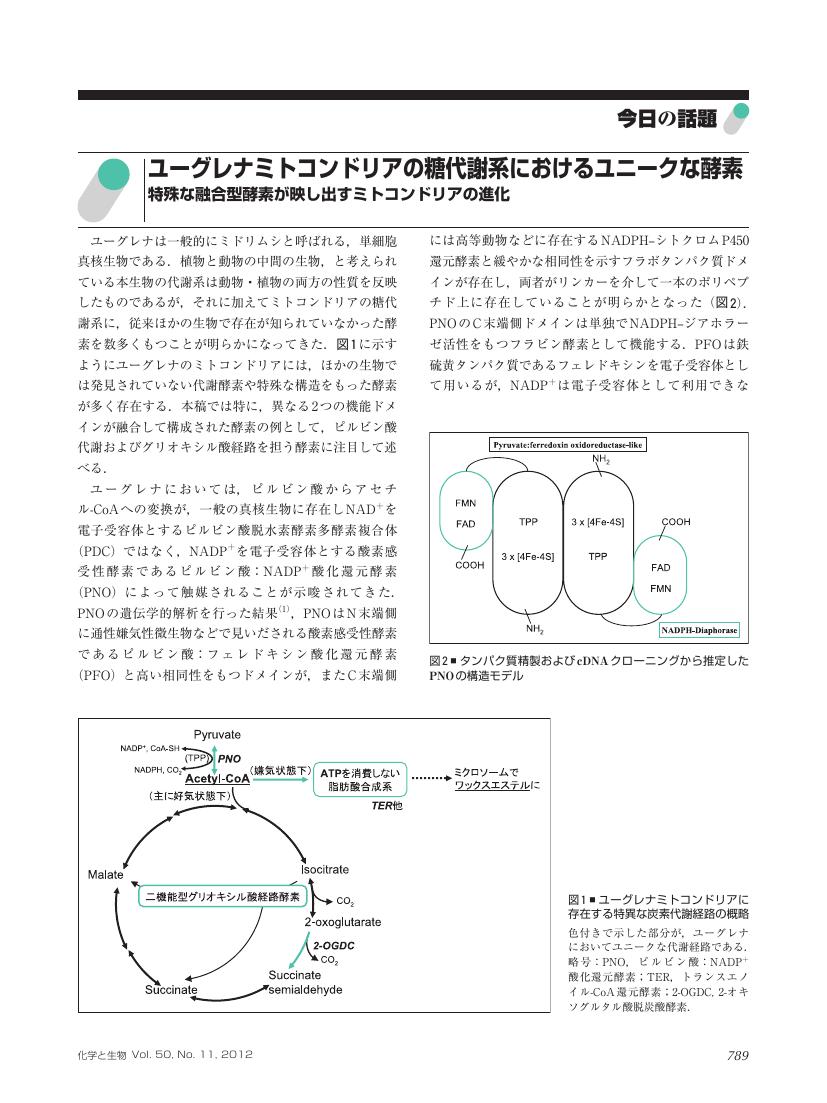- 著者
- 中澤 昌美 宮武 和孝
- 出版者
- 公益社団法人 日本農芸化学会
- 雑誌
- 化学と生物 (ISSN:0453073X)
- 巻号頁・発行日
- vol.50, no.11, pp.789-791, 2012-11-01 (Released:2013-11-01)
- 参考文献数
- 5
- 著者
- 松本 隆仁 乾 博 宮武 和孝 中野 長久 村上 克介
- 出版者
- 生態工学会
- 雑誌
- Eco-Engineering (ISSN:13470485)
- 巻号頁・発行日
- vol.19, no.4, pp.223-227, 2007-10-31 (Released:2008-03-29)
- 参考文献数
- 29
- 被引用文献数
- 1
We have investigated the effects of light quality and CO2 concentration (0.04% and 10%) on growth of Euglena as a fundamental study. Useful nutrients such as high quality protein and fatty acid, as well as specific saccharide (β-1,3 glucan), contained in Euglena are now being highlighted. In the present study, we investigated the effects of light quality and CO2 concentration on the production of protein, paramylon and fatty acid. Under the CO2 concentration of 0.04%, protein contents in Euglena cultured in red and blue light were 105.0 μg 106 cells-1, paramylon 48.2 μg 106 cells-1, and in blue light fatty acid was 20.3 μg 106 cells-1, higher than those in other light conditions. Whereas under the CO2 concentration of 10%, protein contents in Euglena cultured in red and blue light were 125.6 μg 106 cells-1, paramylon 57.6 μg 106 cells-1, and in blue light fatty acid 29.7 μg 106 cells-1, higher than those in ordinary air conditions (with 0.04% CO2). No significant differences in these nutrient contents were found between the four light quality treatments under the CO2 concentration of 10%. As previous data we showed growth of Euglena depended on chlorophyll contents, protein and paramylon contents depended on chlorophyll contents, too. It was concluded that Euglena would be good nutrition source when they are cultured in each light conditions under CO2 concentration of 10%, so CO2 discharged from industrials, power stations and so on, will be utilized to this new food production system, effectively.
- 著者
- 中野 長久 宮武 和孝 乾 博 穂波 信雄 村上 克介 金井 謙二 辰巳 雅彦 相賀 一郎 近藤 次郎
- 出版者
- CELSS学会編集委員会
- 雑誌
- CELSS journal (ISSN:09154353)
- 巻号頁・発行日
- vol.10, no.2, pp.13-23, 1999-03-01
- 参考文献数
- 28
